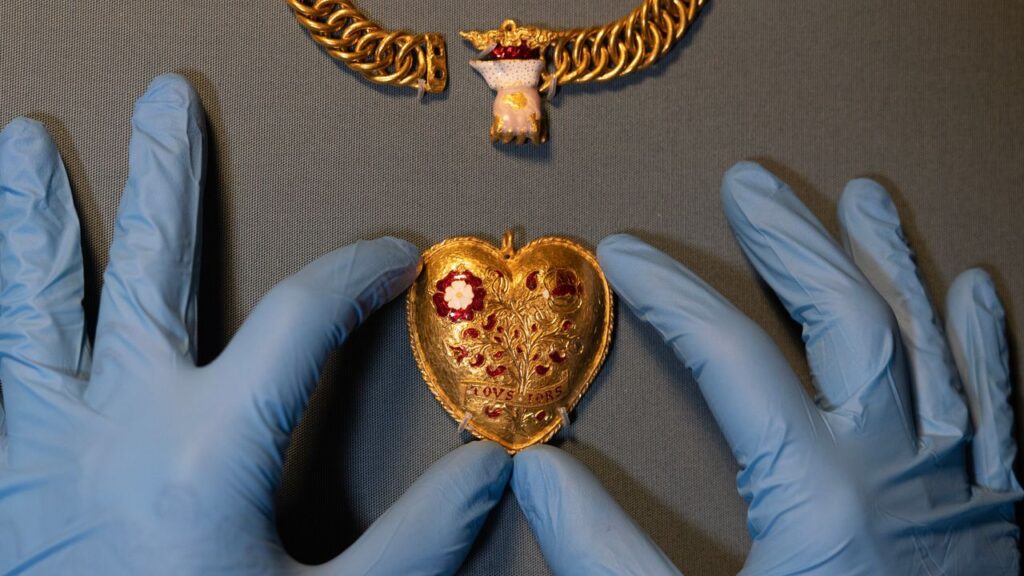In 2019, Birmingham cafe owner Charlie Clarke was walking through a field in Warwickshire with a metal detector he’d purchased some six months earlier. His hobby walk resulted in the discovery of a heart-shaped pendant now called the Tudor Heart. A beep alerted Clarke to the presence of something near a drained pond, so he decided to start digging. He thought it would be the usual coins; instead he unearthed a chain and an ornate pendant, all made of solid gold. It’s a find that Nicholas Cullinan, the director of the British Museum where the heirloom is currently on display, called the piece “perhaps one of the most incredible pieces of English history to have ever been unearthed.”
There are many mysteries surrounding the Tudor Heart, including how that pendant got to that field, a question that may never be answered. After being painstakingly analyzed in every detail from a scientific as well as historical point of view, the relic has been confirmed as a genuine one of the era. It may have been created for the couple’s daughter, Princess Mary, with markings representing both her parents and their love for one another.
The heart-shaped locket pendant is attached to a 75-ring chain through a fist-shaped clasp. Everything was made with pure gold. On the front is an enameled decoration depicting a pomegranate bush, the emblem of Catherine’s family and a symbol of fertility, on which a red and white Tudor rose, Henry’s symbol, stands out while behind are the initials of the two, “H” and “K” (Katherine, Catherine in English).
It reads “tousjors” on the ribbon engraved on both sides. That means “always” in Old French, but Rachel King, the scholar who curates the European Renaissance section at the British Museum, suggested that it may also be meant as a pun between “tovs” and “iors,” which would be to say “all yours” in Old Franglais, a language melding French and Old English.
Many hypotheses have been made to contextualize the jewel, and not all of them are so romantic. The British Museum theorized that the heart-shaped pendant could have been created at a tournament held in 1518 to celebrate the betrothal between Mary, the daughter of Henry VIII and Catherine of Aragon, who was just two years old, and the Dauphin of France Francis of Valois, only eight months old. The match would make Mary the first reigning queen, ruling England in her own right.



